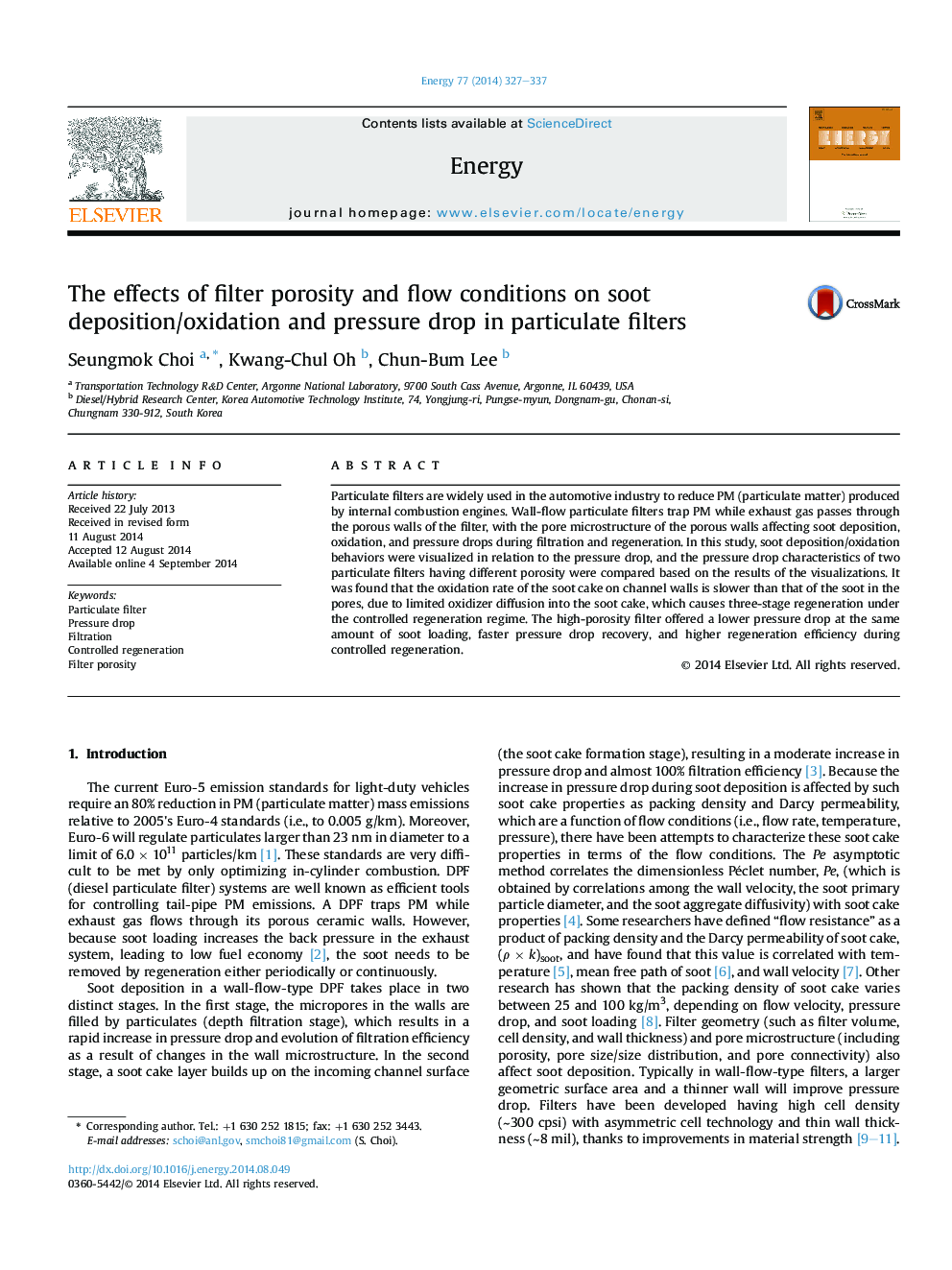| Article ID | Journal | Published Year | Pages | File Type |
|---|---|---|---|---|
| 8076357 | Energy | 2014 | 11 Pages |
Abstract
Particulate filters are widely used in the automotive industry to reduce PM (particulate matter) produced by internal combustion engines. Wall-flow particulate filters trap PM while exhaust gas passes through the porous walls of the filter, with the pore microstructure of the porous walls affecting soot deposition, oxidation, and pressure drops during filtration and regeneration. In this study, soot deposition/oxidation behaviors were visualized in relation to the pressure drop, and the pressure drop characteristics of two particulate filters having different porosity were compared based on the results of the visualizations. It was found that the oxidation rate of the soot cake on channel walls is slower than that of the soot in the pores, due to limited oxidizer diffusion into the soot cake, which causes three-stage regeneration under the controlled regeneration regime. The high-porosity filter offered a lower pressure drop at the same amount of soot loading, faster pressure drop recovery, and higher regeneration efficiency during controlled regeneration.
Related Topics
Physical Sciences and Engineering
Energy
Energy (General)
Authors
Seungmok Choi, Kwang-Chul Oh, Chun-Bum Lee,
